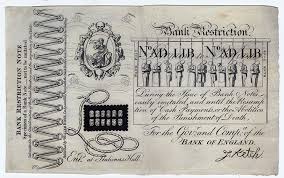The creation of the Bank of England in 1694 CE marked a turning point in how governments financed wars and managed national debt. Before its establishment, England struggled to raise funds for military campaigns, relying on high-interest loans from private lenders or emergency tax increases. This system was inefficient and often left the country in financial turmoil.
To solve this crisis, the Bank of England introduced a revolutionary method of war financing: the issuance of government bonds, backed by the bank and indirectly supported by England’s growing gold reserves. This transformed public finance, allowing England to borrow large sums of money at lower interest rates, ensuring its military and economic dominance in the 18th century.

Why Did the Bank of England Begin Issuing Government Bonds?
1. The High Cost of War with France
- England was engaged in the Nine Years’ War (1688–1697) against France, requiring vast sums of money for soldiers, weapons, and ships.
- Traditional financing methods—raising taxes or borrowing from private lenders—were too slow and unreliable.
2. The Need for a More Efficient Debt System
- Before 1694, the government had no structured way of borrowing money, relying instead on short-term loans with high interest rates.
- There was no central institution to manage debt, making it difficult to finance long-term military campaigns.
3. Strengthening Confidence in Government Credit
- The Bank of England provided a trustworthy system where money loaned to the government was backed by gold reserves and tax revenues.
- By issuing bonds that paid fixed interest, the government could attract investors and fund public expenses more effectively.
✅ Result: The Bank of England introduced a structured government bond system, creating a sustainable financial model for war funding and national development.
How Did the Bank of England’s Bond System Work?
A. Selling Bonds to Investors
- The government issued bonds (also called “gilt-edged securities” or “gilts”), which could be purchased by merchants, banks, and wealthy individuals.
- Investors lent money to the government in exchange for a fixed interest payment over a set period.
B. Backing Bonds with Gold Reserves & Tax Revenues
- The bonds were indirectly backed by the Bank of England’s gold reserves, ensuring their stability.
- The government used tax revenue to pay interest on the bonds, making them a safe and attractive investment.
C. Creating a Long-Term Debt Market
- The Bank of England’s bond system allowed the government to borrow large sums of money immediately while repaying over time.
- Investors could sell or trade their bonds, leading to the growth of an active bond market in London.
✅ Result: This system stabilized public debt, lowered borrowing costs, and allowed England to fund its wars more efficiently.
The Impact of Government Bonds on England’s Economy
1. Financing England’s Military Expansion
- Bonds provided a steady flow of money for war, helping England build a powerful navy and military.
- This financial stability contributed to England’s victories in the War of the Spanish Succession (1701–1714).
2. Turning London into a Global Financial Center
- The introduction of government-backed bonds led to the rise of London’s financial markets.
- Foreign investors, including Dutch and Italian bankers, purchased English bonds, strengthening England’s financial position.
3. Influencing Other European Nations
- England’s bond system became a model for public debt management.
- France, the Netherlands, and later the United States adopted similar government bond systems in the 18th and 19th centuries.
✅ Result: The ability to borrow money through bonds rather than raising taxes or debasing currency gave England a major financial advantage over its rivals.
Conclusion: The Birth of Modern Public Finance
The Bank of England’s introduction of government bonds revolutionized the way nations funded wars, managed debt, and stabilized their economies. By creating a sustainable borrowing system, England:
✅ Secured long-term war financing, allowing it to compete with France and other European powers.
✅ Strengthened its economy, making London a leading financial center.
✅ Created a model for modern national debt, which influenced global finance for centuries.
This financial innovation helped England fund its empire, expand global trade, and eventually emerge as the world’s dominant economic power in the 18th and 19th centuries.
